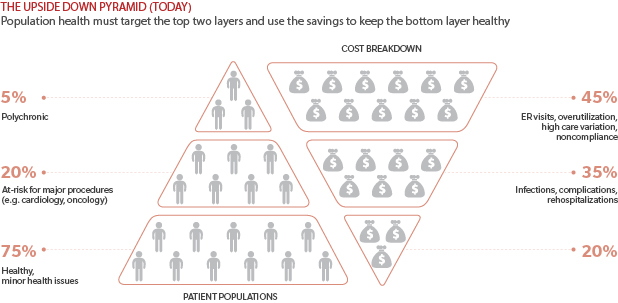Here, Oliver Wyman offers an overview of three major waves of innovation that over the next decade will bring us to a new patient-centered and value-based approach to healthcare delivery. This healthcare revolution will not only improve the quality of care and reduce its cost, it will also lead to a transformation of the field, as traditional providers and new entrants compete on cost and quality—and more than a trillion dollars in value shifts from old models to new.
Volume-to-Value Revolution
The Volume-to-Value Revolution explores how the health marketplace will be redesigned from the patient’s perspective — with an unrelenting focus on improving patient value. Unlike any other industry, the healthcare market value equation is completely broke. Technology- powered businesses reduce costs by as much as 25 percent each year while tripling value every three years. Healthcare increases costs by 8 percent and reduces value by 10 percent a year. That dynamic needs to be reversed and Oliver Wyman research showcases the possibilities.
The first step toward change is to embrace population health, focusing on high-need and high-cost patient segments that represent the best opportunity to improve health and lower costs – then use those savings to generate resources to fund investment in coordination and prevention throughout the pyramid.








